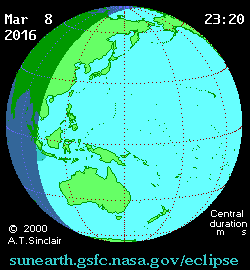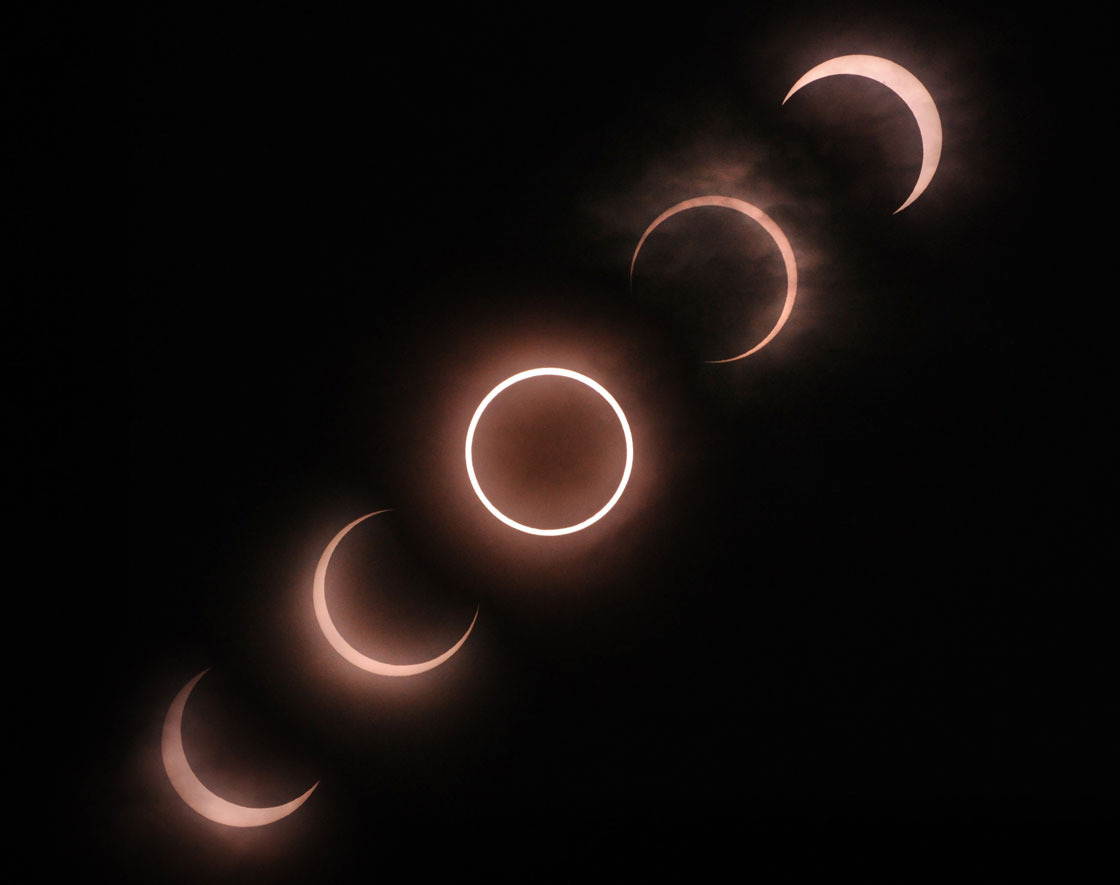While the moon may not slowly slip across the disk of the sun here in Canada on Tuesday, there are still ways you can watch the solar eclipse that is happening on the other side of the world.

A total solar eclipse — the only one of the year — will occur over Indonesia and the North Pacific Ocean on Tuesday and Wednesday.
READ MORE: In Photos—Partial solar eclipse and giant sunspot wows observers
It happens on two different days due to the International Date Line, and — strangely enough — it actually happens in the opposite order: March 9 and then March 8.
WATCH: Total solar eclipse over Indonesia, North Pacific Ocean


The eclipse — which takes place over more than three hours — begins over Indonesia and continues eastward over the Pacific.
Now, we won’t be able to see it for ourselves, but thanks to the Internet, we get to enjoy the fantastic celestial event, too, with the added bonus of not having to wear eye protection (which you should always do if you’re observing it for yourself).
WATCH: NASA animation shows solar eclipse path

Solar eclipses occur when the moon passes between Earth and the sun. Total solar eclipses happen due to a fortunate coincidence. The sun is about 400 times larger than our moon. But the moon is also about 400 times closer to us. So that means that they are roughly the same size in our sky. However, the moon’s orbit is elliptical, so it’s not always the same distance away. That varying distance produces another type of eclipse every so often: an annual solar eclipse, where the moon doesn’t cover the sun’s disk entirely.
And yes: Tuesday’s solar eclipse occurs during a “super moon,” a full or new moon that occurs during the moon’s perigee, when the moon is at its closest point to Earth in its monthly orbit.





Comments